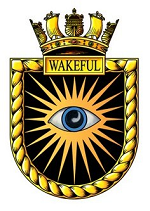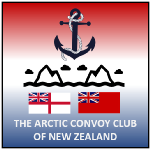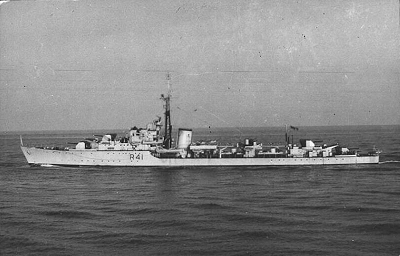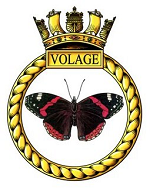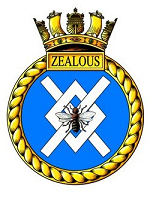ACCNZ Members that served on this ship:
James Day, Wellington (deceased); Douglas Gooday (deceased); and Jim Gallie, Christchurch (deceased)
HMS Victorious (R38) was the second Illustrious-class aircraft carrier ordered under the 1936 Naval Programme. She was laid down at the Vickers-Armstrong shipyard at Newcastle-Upon-Tyne in 1937, and launched just two weeks into World War II in 1939.
Yet she was not commissioned into the Royal Navy until 1941 due to an urgent and more pressing need for escort vessels for service in the Battle of the Atlantic. In 1941, just two weeks after commissioning, her first active mission began when she took part in the infamous hunt for the German battleship Bismarck in the North Atlantic.
Originally intended to be part of the escort for convoy WS-8B to the Middle East, Victorious was hardly ready to be involved in a hunt for the Bismarck with just one-quarter of her aircraft embarked aboard her. Sailing with the battleship HMS King George V, the battlecruiser Repulse, and 4 light cruisers, Victorious was hastily deployed to assist in the pursuit of the German ship. On 24 May 1941, Victorious launched nine of her biplane Fairey Swordfish torpedo bomber aircraft and two Fulmar fighters. The Swordfish, under the command of Eugene Esmonde who would make his name with the "Stringbag" as the Swordfish was known, flew through foul weather and attacked in the face of tremendous fire from Bismarck's anti-aircraft guns. The result was only a single hit to the armoured belt. No aircraft were shot down during the attack, but the Fulmars ran out of fuel on the return journey and had to ditch in the ocean. Victorious would have no further part in the historic chase and sinking; aircraft from another carrier the Ark Royal would play a role that led to the sinking of the Bismarck three days later. Esmonde received a DSO for his part in the action.
After ferrying aircraft to the besieged British Mediterranean base of Malta, Victorious returned to the naval base at Scapa Flow. She took part in various attacks against ports in Norway, which was under German occupation, as well as taking part in the arduous Arctic convoys, a vital supply line for the Soviet Union. On 9 March 1941, Victorious launched an attack on Bismarck's equally fearsome sister-ship Tirpitz. She scored no hits on the battleship, but it was enough to play a part in Hitler's decision to order all Kriegsmarine capital ships to not risk themselves against enemy aircraft. The Arctic convoys were suspended temporarily after the horrendous losses that Convoy PQ17 suffered. Twenty-three ships out of thirty-six were sunk after the convoy had been scattered in fear that an attack was imminent by the German warships Admiral Hipper, Lützow, Admiral Scheer, and Tirpitz.
The suspension of the Northern convoy route released Victorious to take part in one last courageous effort to get supplies into Malta - Operation Pedestal. Pedestal, which began on 10 August 1942, involved a great array of ships in several groups working together; the battleships HMS Rodney and Nelson, the aircraft carriers HMS Eagle, Indomitable, and Furious, the cruisers HMS Cairo, Charybdis, Kenya, Manchester, Nigeria, Phoebe, and Sirius, thirty-two destroyers. Some of the carriers were transporting aircraft for Maltas use and the supplies were on fourteen merchant ships. On the 11 August 1942 Victorious was slightly damaged by attacks from Italian bombers. The Eagle was less fortunate; torpedoed and sunk by a German U-boat. Ultimately Pedestal was a success. Supplies, including oil, and reinforcing Spitfires allowed Malta to hold out but at a cost of the loss of nine merchant ships, one aircraft carrier, two cruisers, and a destroyer.
Between May and July, 1943, Victorious and Saratoga provided air support for Allied forces, including the invasion of New Georgia. In late 1943, Victorious returned to the UK, to the naval base at Scapa Flow. The refit had included the addition of such typically American appliances such as soda machines and ice cream freezers which were ridiculed by the sailors of the Royal Navy upon its return to them.
On 2 April 1944, Victorious joined Anson, Duke of York, Emperor, Fencer, Furious, Pursuer, and Searcher, along with numerous cruisers and destroyers, in launching a devastating attack (Operation Tungsten) on the Tirpitz, involving twenty Barracudas in two waves, hitting the battleship fourteen times. The attack put Tirpitz out of action for three months. During the operation, Victorious became the first Royal Navy aircraft carrier to operationally use the F4U Corsair fighter. The Task Force returned to Scapa Flow after this relative success three days later.
In June 1944, Victorious was attached to the British Eastern Fleet at Trincomalee, where she arrived on the 5th July. Victorious along with Illustrious, launched a strike against Palembang (Operation Crimson) and another strike in conjunction with Indomitable occurred against the Andaman Islands. Over the next eight months, awaiting the formation and departure of the British Pacific Fleet (BPF), the carriers Formidable, Illustrious, Implacable, Indomitable, and Indefatigable along with the battleships Howe and King George V, escorted by six cruisers and twelve destroyers, launched numerous air strikes against Japanese forces and installations in Indonesia. The BPF finally departed Ceylon on 13 January 1945, en route to Sydney, Australia. Aircraft from the fleet attacked installations on Sumatra and Java on the 24 and 29 January (Operation Meridian).
In April 1945, Victorious along with Illustrious, Indefatigable, and Indomitable, launched strikes against Okinawa, along with the US 5th Fleet. While there, Victorious was hit by two kamikazes, though she suffered only minor damage due to her armoured flight deck, which was more resilent to such attacks than the wooden decks of American carriers. In July, aircraft from No. 849 Squadron, embarked aboard Victorious, located and attacked the Japanese escort carrier Kaiyo, seriously damaging her while at Beppu Bay, Kyūshū. She was stricken from the Japanese naval register a few months later. Immediately after the war, Victorious assisted in the repatriation of prisoners of war. Following this, in 1946, Victorious was pressed into service to carry war brides of British servicemen from Australia to the UK.
HMS Victorious sailed in convoys: PQ12 + PQ13 + PQ14 + PQ15 + PQ16 + PQ17 + QP9 + QP10 + QP11 + QP12 + QP13. Motto: "Per Coelum et Aequorum" "A victor in the sky and at sea". Badge date: 1938
In November 1942, she took part in the North African landings. Operation Torch involved 196 ships of the Royal Navy and 105 of the United States Navy. The total number of Allied soldiers that landed was about 107,000. Ultimately successful, Operation Torch was the precursor to the later invasions of Sicily and France. After a refit in the United States at the Norfolk Navy Yard during the winter of 1942-43, Victorious sailed through the Panama Canal to operate with the United States forces in the Pacific. During this time, the code name for the carrier was USS Robin, from the character "Robin Hood," as the US Navy was temporarily "poor" in carriers. In April 1943, Victorious sailed for Pearl Harbor to join Saratoga's Battle Group, at that time the only operational American carrier in the Pacific. Her operations in the South Pacific area were conducted in the Solomon Islands. During this time Victorious was home to US Navy fighter squadron VF-6, flying F4F Wildcats, as well as its own Wildcats of No. 832 Squadron (832 Squadron's Avengers were at this time detached to Saratoga).
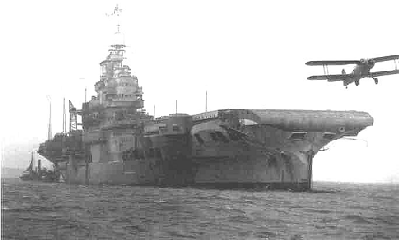
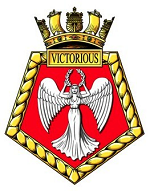


Click on the tv icon to view
video of
HMS Victorious
ACCNZ Member that served on this ship:
Bob Crotcher (deceased), Christchurch
A mercantile requisitioned by the Admiralty whilst under construction by Swan Hunter for the Port Line in October 1942. Converted to an Escort Aircraft Carrier of the "Nairana" class. Launched 4 May1943 and completed 3 December 1943. Her aircraft aided in the sinking of U653, U765, U344 and U394. After service on Russian convoys, the ship was prepared for service with the British Pacific Fleet and sailed from the Clyde in July 1945. Due to the war's end, was deployed for the transport of stores and repatriated POW's until nominated for return to UK to pay off.
Purchased by the Port Line in October 1947, converted back to a mercantile and named Port Vindex. Sold in 1971 and towed to Formosa on 23 August 1971 for breaking up.
HMS Vindex sailed on convoys JW59 + JW61 + JW63 + JW66 + RA59a + RA61 + RA63 + RA66. Motto: "Diu Noctuque Mari Coeloque" "By day and by night, by sea and by sky". Badge date: 1943
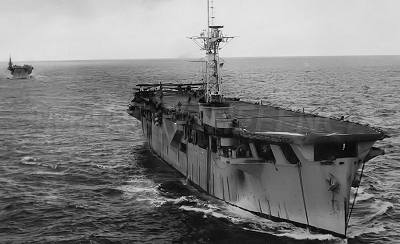
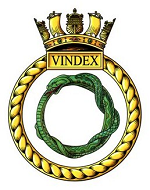

ACCNZ Member that served on this ship:
James Mitchell, Putaruru
HMS Wakeful was a W-class destroyer of the Royal Navy launched in 1943. She saw service during the Second World War and was later converted into a Type 15 fast anti-submarine frigate. She was sold for scrap in 1971.
She was ordered from Fairfield Shipbuilding and Engineering Company, Govan, Glasgow on 3 December 1941 as part of the 9th Emergency Flotilla. She was laid down on 3 June 1942 under the provisional name of Zebra, but was renamed Wakeful in January 1943, exchanging names with a destroyer also under construction, which was subsequently launched as HMS Zebra. She became the second ship of the name, the first being an Admiralty W-class destroyer sunk by a German E-Boat off Dunkirk in 1940 during Operation Dynamo, the evacuation from Dunkirk.
Wakeful joined the Home Fleet on 17 February 1944 for sea trials and working up, before entering active service in March and forming part of the 27th Destroyer Flotilla when more ships of the class became available. While serving with the Home Fleet the Flotilla was deployed to support Operation Tungsten, where she served as an escort vessel during the air raids on the German battleship Tirpitz in Altenfjord. In May 1944 Wakeful served as an escort during air attacks on German shipping off Narvik and Stadlandet, Norway as part of the 27th Destroyer Flotilla.
Throughout June and July 1944 she was refitted for redeployment to the Eastern Fleet remaining with the 27th Destroyer Flotilla for operations in the Indian Ocean based at Trincomalee. In October 1944 the Eastern Fleet initiated diversionary air attacks on the Nicobar Islands during the US amphibious assault of Leyte. In November 1944 Wakeful, with the remainder of the Flotilla, was transferred to the British Pacific Fleet upon its formation.
In January 1945 'she took part in Operation Meridian One as an escort during air attacks on refineries at Pladjoe, and then took part in Operation Meridian Two as an escort during air raids on Soengi-Gerong near Palembang. In March 1945 the British Pacific Fleet joined Admiral Raymond Spruance's United States Fifth Fleet, before joining Admiral William Halsey's United States Third Fleet in May 1945. During August 1945 Wakeful was on escort duties during the Royal Navy and United States Navy's air raids on Hokkaido and North Honshū. The destroyer was in Tokyo Bay during the formal surrender and was available to support the occupation of Japan, remaining in Japanese waters to help with the repatriation of allied nationals before departing for Sydney. She returned to the UK in December 1945, having received the battle honours 'North Sea 1944' and 'East Indies 1944' for her wartime service.
Wakeful was used as a Boys Training ship until she was converted to a Type 15 anti-submarine warfare frigate by Scotts Shipbuilding and Engineering Company between 1951 and 1953. In 1953 she took part in the Fleet Review to celebrate the Coronation of Queen Elizabeth II.
She was assigned the new pennant number F159 and served in the Mediterranean as a part of the 5th Frigate Squadron until 1957. During this time she took part in Operation Musketeer, the Anglo-French assault on Port Said to take control of the Suez Canal. In 1959 she recommissioned as leader of the Portsmouth Squadron, as a training tender to the Navigational Training School at HMS Dryad, and as trials ship to the Admiralty Surface Weapons Establishment (ASWE). On 25 February 1960 she was used for the burial at sea of Edwina Mountbatten, Countess Mountbatten of Burma off the coast of Portsmouth.
In April 1964 she was part of the 2nd Frigate Squadron and took part in 'Navy Days' in Portsmouth during that year. In the same year Wakeful was used for the filming of the opening scenes of The Bedford Incident, including Sidney Poitier's initial flypast and landing from a Whirlwind helicopter, when her pennant number F159 is clearly visible. (Some interior scenes were filmed in her sister Type 15 frigate Troubridge).
Between 1966 and 1967 she was fitted with experimental satellite and stabilisers for trials. In 1968 she took part in 'Navy Days' at Portsmouth Dockyard and at this time was part of the 2nd Frigate Squadron. On 31st October 1967 she escorted the RMS Queen May out of Southampton on her final voyage to Long Beach for retirement. In 1969 she was replaced by Grenville.
In 1970 Wakeful was put on the Disposal List, and on 26 February left Portsmouth for de-equipping. She was sold to Thos W Ward for scrapping on 10 July 1971 and arrived in tow at Inverkeithing for demolition on 5 July that year.
HMS Wakeful sailed in convoys: JW63 + JW64 + RA63 + RA64. Motto: "Si Dormium Capiar" "Catch a weasel asleep". Badge date: 1919
